

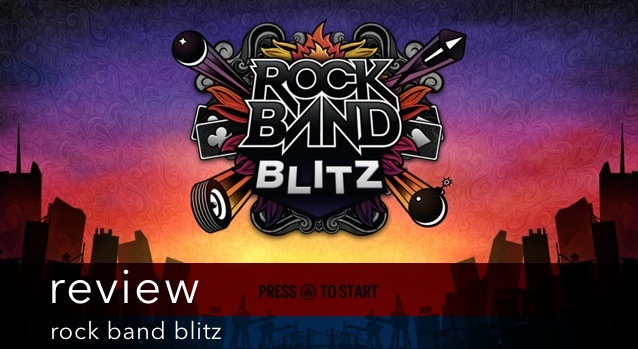
Precision. It’s the most important component of most rhythm games. From Dance Dance Revolution and Samba De Amigo to Guitar Hero and Rock Band, being good at rhythm games involved being precise. You got points from streaks of notes, requiring sustained accuracy when playing. And if you missed too many notes, you lost and had to start over. Sure, some games messed with the formula a bit, like Rock Band offering modes where you couldn’t fail out of a song, but the core generally remained: to play well, the most important thing is getting as much as you can precisely right.
But not in Rock Band Blitz.
In Rock Band Blitz, you succeed by planning ahead. Precision is still important; it is of course better to get the notes right than not, but you can be 100% precise and still get a low score. The crucial difference in Rock Band Blitz is that you shift from track to track. As a single-player game, it doesn’t make sense to lock the player onto only one instrument. So you shift, from vocals to bass, from guitar to drums, and to keyboards if the song has them.
You have to shift in order to get a high score. Each track builds score multipliers by playing notes. At certain intervals in the song, those multipliers get added to a base score, but only from the lowest track. It sounds more complicated than it is in practice: the core idea is that you have to play each instrument enough to fill it in visually. Once that’s done, you move to the next track. Switching tracks quite often guarantees missed notes, making precision impossible in some cases or simply unwise. But it’s better to play every instrument a little bit than play one perfectly, because you get bigger score bonuses.

Rock Band Blitz (PlayStation 3, Xbox 360) Developer: Harmonix Music Systems
Publisher: Harmonix Music Systems
Released: August 28, 2012
MSRP: $14.99 (1200 Microsoft Points)
So as you play, you have both decide which instrumental track is the best use of your time for building multipliers and points. You also have to know the song: if there’s only a little bit of bass in that section, you’d best play it. If you’re stuck doing the drums at that point, then you’ll lose the multiplier. Before each song, you can also select a group of passive and active bonuses. For example, you can have 2x score multipliers that you deploy for short periods of time, higher scores on any instrument track, or odder perks, like “Flame Notes” that you can chase across all the instruments for big point combos.
In short, there’s strategy and decision-making in a rhythm game. Given that “choice” in rhythm games usually just means “selecting the song you want to play,” this is a welcome jolt of variety.
Another benefit of Rock Band Blitz, especially compared to its parent game series, is that it doesn’t require the plastic instruments. It’s made for a controller, which makes it more accessible in terms of picking up and playing without any setup. That’s also good news for those of us who don’t have space for the Rock Band instruments, but want a game with access to the Rock Band music library.
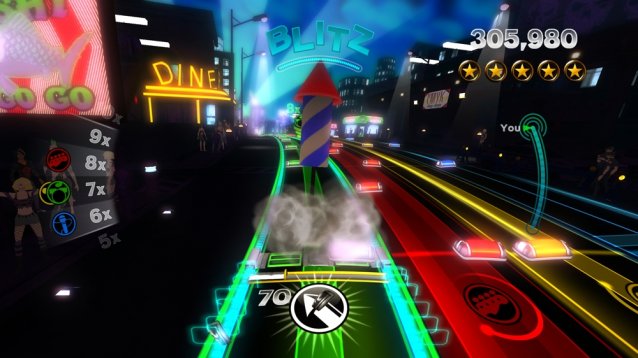
Those controls aren’t entirely perfect, though. You play by pushing two buttons while running along each instrument, which correspond to notes on the right and left side of the track. The default is to use the X button (on PS3, presumably A on Xbox 360) for notes on the right, and the d-pad for notes on the left. This usually works, but in tougher sections, like two repeated left notes followed by a right, the d-pad isn’t fast enough. Other controller modes exist, like one where the shoulder buttons play the notes instead of switching tracks. It can be a finger workout, though, be warned.
The songs are a final reason to be excited about Rock Band Blitz. At $15 for 25 new Rock Band songs, it’s a decent deal for fans of that game even if they never even touch Blitz, since they can all be played in Rock Band 3. I myself am not a huge fan of any of the 25, but that seemed to be more the luck of the draw than anything. There’s a good collection of recent hits like “Moves Like Jagger” and “Pumped Up Kicks” as well some older anthems like “Shout,” “Give It Away,” and “Jessie’s Girl.” Blitz itself will let you play any song you can import into Rock Band 3, although oddly it does not play the Rock Band 3 on-disc songs.
Symbiosis with Rock Band 3 is one of Blitz’s bigger weaknesses, though, in an odd sense. The 25 songs aren’t enough to sustain interest, meaning that you probably have to go buy or import other songs, which starts to cost a lot more than $15. And at that point, the question becomes: why not just play Rock Band? As a single-player, accessible experience, Blitz has its advantages, and its alteration of the rhythm form may help reshape the genre down the road. But for now, it’s best understand as a very good accessory to Rock Band 3 more than a standalone product.


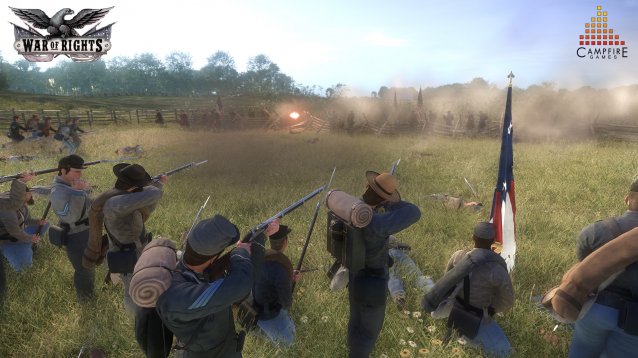
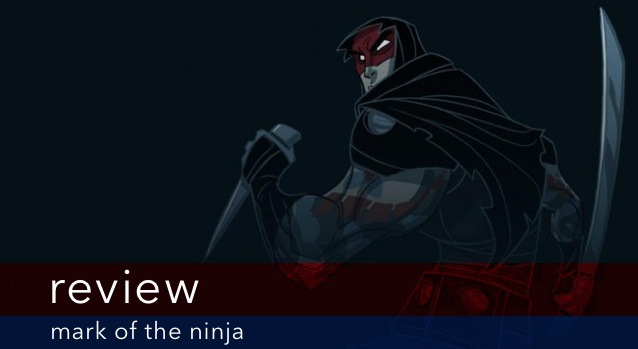
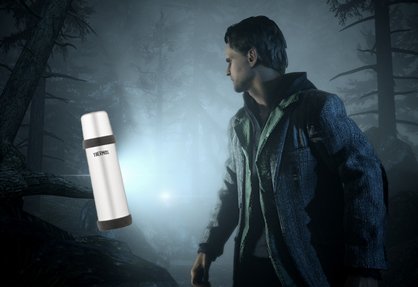
 Think Before You Sign - Not All Job Offers Are Good
Think Before You Sign - Not All Job Offers Are Good Metal Gear Solid V: TPP Guide - Beginner Tips for Survival
Metal Gear Solid V: TPP Guide - Beginner Tips for Survival Bayonetta 2: Video Walkthrough & Boss Strategies Guide
Bayonetta 2: Video Walkthrough & Boss Strategies Guide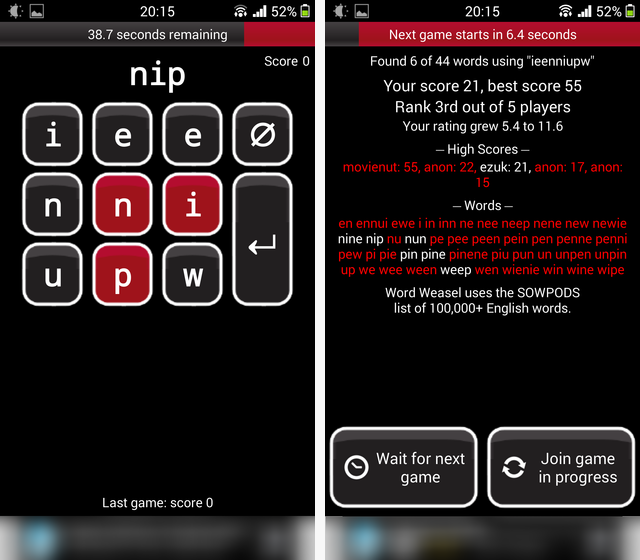 Tired of Words With Friends? We Found 2 Android Multiplayer Word Games That Are Better
Tired of Words With Friends? We Found 2 Android Multiplayer Word Games That Are Better NBA 2K15 Guide: How to Get A and A+ Teammate Grade Easily
NBA 2K15 Guide: How to Get A and A+ Teammate Grade Easily